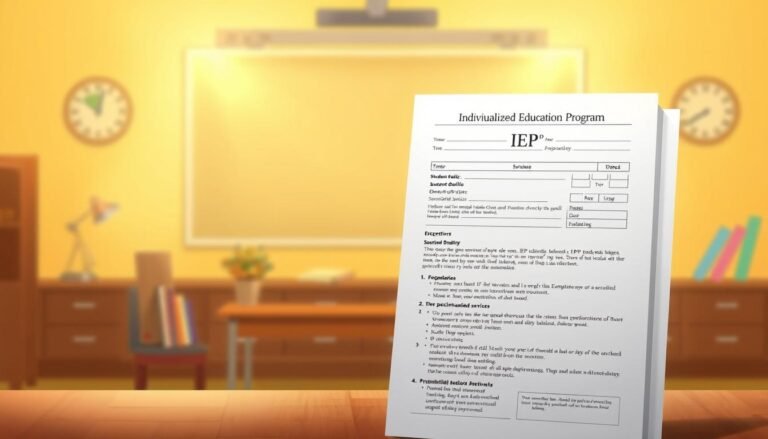From Struggle to Strength: Proven Strategies for Supporting Language Development in Children with Learning Disabilities
Introduction
Every child deserves the chance to communicate effectively, and for those with learning disabilities, the road to proficient language development can seem daunting. Parents, educators, and therapists often witness the struggles these children face, and the emotional toll can be tremendous. It’s crucial to transform this struggle into strength, utilizing effective strategies that promote language skills. This article will delve into From Struggle to Strength: Strategies for Supporting Language Development in Children with Learning Disabilities, providing practical insights and real-world applications that make a significant impact.
Understanding Learning Disabilities
To better support language development, it is important to understand what learning disabilities are and how they affect communication. Learning disabilities can manifest as difficulties in reading, writing, or mathematics, resulting from neurological differences. Children with these disabilities often struggle with processing language, which can lead to challenges in both expressive and receptive communication.
Types of Learning Disabilities Affecting Language Development
- Dyslexia: Difficulty with reading, spelling, and writing due to issues in recognizing and processing sounds.
- Dysgraphia: Challenges with writing, which may affect fine motor skills and the ability to organize thoughts on paper.
- Dyscalculia: While primarily affecting math skills, children with dyscalculia may also struggle with language used in mathematical contexts.
Understanding these disabilities is the first step toward helping children overcome their challenges.
Strategies for Supporting Language Development
1. Create a Language-Rich Environment
A language-rich environment is pivotal for any child’s development, especially for those with learning disabilities. Surrounding children with diverse vocabulary and opportunities for communication can stimulate their language skills.
Key Techniques:
Read Aloud Daily: Engaging in daily reading promotes comprehension and introduces new vocabulary. Choose books that match the child’s interests to keep them motivated.
- Encourage Dialogue: Ask open-ended questions during conversations to promote expressive language skills. For instance, instead of asking, “Did you like the movie?” ask, “What was the best part of the movie, and why?”
| Activity | Purpose |
|---|---|
| Reading books aloud | Enhances comprehension and vocabulary |
| Engaging in storytelling | Develops narrative skills and creativity |
| Playing word games | Improves vocabulary and reinforces language concepts |
2. Use Multi-Sensory Learning Techniques
Multi-sensory learning can be incredibly effective for children with learning disabilities. This approach utilizes visual, auditory, and kinesthetic channels to enhance understanding and retention.
Implementing Multi-Sensory Strategies:
Leverage Visual Aids: Use pictures, charts, and videos to support verbal instructions and enhance comprehension. For children with dyslexia, highlighting text can improve reading fluency.
- Incorporate Movement: Activities that combine language learning with physical movement can strengthen neural connections. Techniques like acting out vocabulary words or using gestures can reinforce memory.
Case Study: Emma’s Journey
Emma is a 7-year-old diagnosed with dyslexia. Her teacher, Mrs. Thompson, implemented a multi-sensory approach in her classroom. By pairing words with images and engaging Emma in movement-based activities, Emma’s reading fluency significantly improved over six months. This approach empowered her to overcome her struggles and demonstrate strength in language learning.
3. Provide Targeted Instruction
Tailored instruction focused on a child’s individual needs is essential. Consider consulting with speech-language pathologists or specialized educators to develop personalized learning plans.
Tailored Instruction Methods:
Specialized Phonics Programs: Phonics instruction helps children with dyslexia understand the relationship between letters and sounds.
- Structured Language Programs: Programs such as Orton-Gillingham provide explicit, systematic teaching methods that can break down complex language skills.
4. Foster Social Skills Development
Language is not only about communicating words; it involves social interaction too. Encourage children to practice language in real-world contexts.
Social Skill Development Techniques:
Role-Playing: Engage children in role-playing scenarios to practice conversational skills and increase their confidence in social situations.
- Social Stories: Use social stories to help children understand and navigate social situations, improving their pragmatic language skills.
5. Use Technology as an Ally
In today’s digital age, technology can offer innovative solutions for language learning. There are numerous apps and software that cater to children with learning disabilities, making learning interactive and enjoyable.
Recommended Tools:
Speech-to-Text Software: Tools like Dragon NaturallySpeaking can assist children who struggle with writing by allowing them to express their thoughts verbally.
- Educational Apps: Programs such as "Endless Alphabet" can make vocabulary acquisition fun and engaging.
Table: Effective Technology Tools for Language Development
| Tool Name | Purpose |
|---|---|
| Dragon NaturallySpeaking | Speech-to-text software for writing assistance |
| Endless Alphabet | Vocabulary building through interactive learning |
| Reading Rockets | Reading resources and strategies for dyslexia support |
6. Build a Support Network
Creating a robust support network encompassing family, educators, and therapists is vital for a child’s language development. Open communication among all parties involved will create consistency and reinforcement across different environments.
Developing a Support Network:
Home and School Collaboration: Regular communication between home and school can ensure that strategies are reinforced consistently. Parents should share observations of their child’s progress with teachers, who can then tailor classroom instruction.
- Involve Speech-Language Pathologists: Regular sessions with speech-language pathologists can provide specialized guidance and strategies tailored to individual needs.
7. Encourage Self-Advocacy
Teaching children to self-advocate is an empowering strategy. As they learn to express their needs and challenges, they develop essential language and communication skills.
Promoting Self-Advocacy:
Practice Language Skills: Encourage children to articulate their thoughts and feelings about their learning experiences, fostering confidence in their communication abilities.
- Set Goals Together: Work with children to set achievable language development goals, enhancing their investment in their learning journey.
Conclusion
Supporting language development in children with learning disabilities requires empathy, creativity, and persistence. By implementing the From Struggle to Strength: Strategies for Supporting Language Development in Children with Learning Disabilities, parents, educators, and caregivers can foster significant growth and advancement in communication skills. Remember, every child has the potential to overcome obstacles and emerge stronger through dedicated support and tailored strategies.
FAQs
1. What are some early signs of language development issues in children?
Common signs of language development issues include limited vocabulary for their age, difficulty following instructions, and challenges in forming complete sentences.
2. How can I effectively support my child’s language development at home?
Engage in daily reading, encourage conversations, and utilize multi-sensory learning techniques to enhance your child’s language skills. Regularly communicate with their teachers for a cohesive approach.
3. Are there specific programs you recommend for children with dyslexia?
Yes, programs such as Orton-Gillingham or Wilson Reading System offer structured, multi-sensory approaches designed specifically for children with dyslexia.
4. How can I involve my child’s school in their language development?
Collaborate with their teachers regarding tailored strategies and resources. Consider requesting an Individualized Education Plan (IEP) if your child requires specialized support.
5. What role does technology play in language development?
Technology can make learning interactive and engaging. Tools such as speech-to-text software and educational apps can provide additional support for children with language challenges.
Closing Thoughts
The journey from struggle to strength in language development is a collaborative effort. Through awareness, empathy, and strategic planning, we can help children with learning disabilities find their voices and thrive. Empowering these children with effective strategies not only aids their communication but also builds their confidence and resilience for the bigger challenges that lie ahead. Together, let’s champion their growth and celebrate their unique strengths.
















